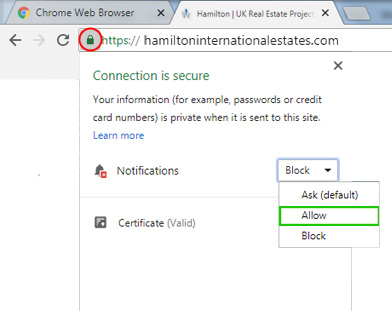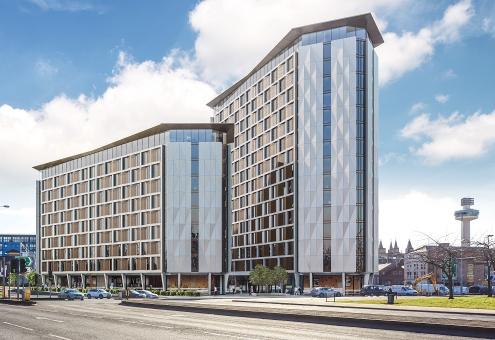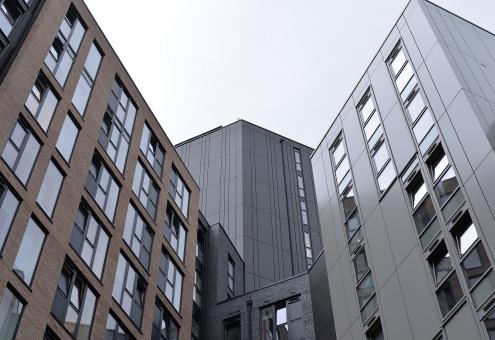Tracker Mortgage
24 Jul 2024
A tracker mortgage is a type of home loan in which the interest rate changes with the Bank of England base rate. You can use a tracker mortgage if you expect the base rate to fall. Often, tracker mortgage rates are already low compared to other types of mortgages, but with a variable rate, the monthly mortgage repayments fluctuate.
What Is A Tracker Mortgage With Examples?
Unlike an SVR mortgage, where the lender sets the rate, a tracker mortgage is a type of variable-rate mortgage whose interest rate tracks an external interest rate. In the case of a fixed-rate mortgage, your payment instalments will not be reduced when the base rate is declined, whereas tracker rates are sometimes priced above or below the rate linked to.
If the tracker mortgage is set at a base rate plus 1.5% and the base rate is 0.5%, the monthly interest repayment you need to make will be 2%. If the Bank of England increases the base rate to 1%, the mortgage interest rate will rise to 2.5%.
Some lenders have an interest rate collar, also called an interest rate floor, on the tracker mortgage. This means the interest rates will not go below certain levels, even if the base rates do.
If the lender sets a collar at 2% and the external interest rate drops to 1.5%, you pay 2% interest on the mortgage. Not all tracker mortgages have collars; you must choose the mortgage deal to suit your requirements.
So, if the tracker mortgage is the base rate plus 2% with a cap of 10%, then you pay an interest rate of 10%, even if the base rate rises above 8%.
How Does A Tracker Mortgage Work?
The tracker mortgage rates do not exactly match the interest rates they track, as they are set at a level just above the set rate. The tracker rates are usually different to the value of the rate followed. In the case of a tracker mortgage, borrowers try to take advantage of the fluctuating interest rates dependent on the base rate and the market conditions.
What Is A Tracker Rate Mortgage?
A tracker mortgage is a variable rate mortgage that adjusts according to an external rate, such as the Bank of England(BoE) base rate, and presents a great deal when the rate decreases.
So, if the BoE rate changes, the mortgage interest rate affects the monthly mortgage payments. Lenders can add features like a cap(maximum rate) or a collar(minimum rate) to ensure the rate stays within the predefined range. Hence, you get predictability amidst the rate variability.
What Is A Tracker Mortgage UK?
Most tracker mortgages track the Bank of England base rate for the loan term, and these are lifetime trackers. It can be risky for the borrowers because it is harder to predict where the interest rates might be when the mortgage ends and these lifetime trackers can have the highest tracker interest rates at the end of the mortgage.
Once the initial term ends, the lender will move on to the standard variable rate (SVR) unless you arrange to remortgage a new deal. The SVR can increase and decrease, and you may have to make higher or lower monthly payments. The lender could change the SVR anytime, whereas the rate on a tracker mortgage changes when the base rate moves.
The SVR is mostly higher than the final rate you paid for the tracker mortgage, so it is advised to remortgage.
Base Rate Tracker Mortgage
The tracker mortgage will likely follow the BoE base rate, but some trackers may follow Libor (the London Interbank Offered Rate). If you have a Libor tracker mortgage, the lender might have switched it to follow the base rate before 2021.
The base rate movement has a huge impact on tracker mortgage rates. The base rate decision is made by a monetary policy committee that meets every six weeks and could change eight times a year.
Tracker Mortgage Pros And Cons
There are some benefits of tracker mortgages-
1. You can get lower initial rates than with fixed mortgages.
2. If the base rate declines, repayments drop, and you get a mortgage at a low rate.
3. There are options for capping the rate, and there will be an upper limit on the rate you may have to pay.
There are some drawbacks of the tracker mortgages –
1. There are uncertainties related to the movement of the interest rates.
2. Usually, you have to pay more if the rate rises, and there will be no maximum to what it may increase if you do not have a cap.
3. If there is a rate collar, even if the base rate declines to lower levels, your payments will not decrease.
Is A Tracker Mortgage A Good Idea Now?
As the demand for tracker mortgages increases, many lenders offer more to first-time buyers and even remortgagers, so it can be a good idea now. However, there are certain downsides to these offers, as they are vulnerable to the increase in the base rates, and there are risks that the rate could exceed the fixed rates offered by other types of mortgages.
One reason to take out a tracker now is that the government has vowed to bring inflation down under control. If the government succeeds in doing so, the BoE will not be required to continue hiking the base rate.
Experts have found that rates will not go to the record lows of the past decade, and the new normal may be 3 to 4 per cent for some time.
Fixed Mortgage Or Tracker Mortgage
Fixed-rate mortgages have a fixed interest rate, so they remain consistent over the entire duration for 2, 3, 5 or 10 years. It ensures financial predictability and stability by shielding borrowers from growing interest rates and facilitating easier budgeting.
If the rates decline, the borrowers must pay more interest than variable-rate mortgages. So when the current fixed-rate mortgage term ends, you can remortgage to secure a new deal at a better rate.
A fixed-rate mortgage payment does not change for a short term. It is a good value for the short term, and you can plan your budget efficiently as you know how much you must pay every month. It is an ideal situation where the payment would not go up throughout the mortgage lifespan, no matter how high the rates.
Fixed-rate mortgages are expensive compared to trackers because you are paying a premium to know how much interest you would have to pay and what your monthly repayments will stay during the deal term.
The rate of interest on a tracker can be low initially, but you face the risk of what the underlying interest might do, and if the base rate increases, you may have to pay more than the fixed rate.
There are other conditions linked with fixed-rate mortgages. It comes with early repayment charges, so if you want to pay before the deal ends, you may have to pay some penalty.
Some advantages of fixed-rate mortgages are –
-
The fixed-rate mortgage monthly repayment stays even when the base rate increases, which makes budgeting simple.
-
Fixed rates are better value than the lender's standard variable rates(SVR).
-
Fixed rates provide financial stability as the mortgage payment remains constant during the deal's set period.
-
Fixed rates will not be profitable when you opt for low mortgage repayments and if the base rate falls. There are charges for early repayments if you try to switch deals prematurely.
In the case of the tracker, payment decreases when the BOE reduces the base rates, presenting a lower rate than fixed mortgages offered in the markets. Trackers have better interest rates than lenders' standard variable rates, and they can be cheaper than fixed-rate mortgages, providing potential savings but not when the base rate is high.
The drawback of tracker mortgages is that their payments increase if the BoE raises the base rate, which affects tracker and fixed mortgage holders.
A rate collar restricts the gains from base rate cuts, resulting in a higher-than-expected rate. If you want to switch deals early, you incur early repayment charges, which can be expensive if not estimated properly.
A fixed-rate mortgage provides stability and is considered best for consistent budgeting, where the tracker fluctuates with changes in economic situations. So, you must decide based on the mortgage product rate, risk tolerance, and economic indicators.
What Are 'Collars' And 'Caps'?
You can get a tracker mortgage with collars and caps. A mortgage with a collar rate cannot fall below a minimum. The collar protects the lender if the base rate declines to very low or negative. If the base rate falls below the collar, the interest rates will not decline.
Some mortgages have a tracker mortgage with a cap. This cap is opposite to the collar, which means no matter how high the base rate goes, the borrower is protected from rising rates. So, both cap and collar set limits on the changing rates and give a certain degree of protection to the borrower and the lender.
Should I Get A Tracker Mortgage?
Whether you want to get a tracker or a fixed mortgage depends on your earnings, circumstances and repayment preferences. In the case of a tracker, you need to have foresight with interest rates. You can benefit from a tracker only when the base rate drops.
You can lock a deal in a fixed rate for peace of mind, but if the rate falls in subsequent years, you may feel you are paying more.
Timing is crucial in the case of long-term investment. In 2008, the impact of central banks' decisions impacted many lenders. The base rate was 5% in 2008, declining to a near-zero level until 2022. If someone locked the rate to 5% for 15 years, they were forced to pay at 5% even during the near-zero low-rate years.
If you bought a fixed-rate mortgage, you could change to and from a fixed rate to flexible rates, but you will have to pay penalties or be asked to pay the early repayment charges.
The tracker options appeal to those looking for flexibility, but you must always be aware of the base rate tracker, which can fluctuate. The Bank can always increase the base rate in the coming months.
What Is A 2-Year Tracker Mortgage?
You can get a tracker mortgage for an introductory period between 1-5 years. A tracker mortgage for a limited time, such as two years, comes to an end after two years, and the mortgage will be moved to the lender's standard variable rate, and then you may have to pay more every month.
So, it is recommended that you look for the best possible options to remortgage the property with another tracked mortgage or search for a fixed deal with the most suitable rates.
The UK mortgage rates in June 2024 were
• For an average 2-year fixed mortgage rate at 60%, LTV was 4.88%.
• The average 5-year fixed mortgage rate at 60% LTV was 4.47%, and the standard variable rate (SVR) was 8.18%.
The decade of cheap mortgages ended in 2024, and remortgages allow you to get the standard variable rates, which can be as high as 10 per cent. However, you can save a lot in remortgages, even when the monthly payments rise.
The FCA figures show that about 1.5 million homeowners' fixed-rate mortgage deals will end in 2024. The Bank of England estimated that about 5 million homeowners will see their monthly mortgage payments increase until 2026.
What Is A Lifetime Tracker Mortgage?
Some mortgages are variable-rate, which means the interest rate fluctuates in line with a 'marker,' the base rate set by the Bank of England. A lifetime tracker is a variable-rate mortgage where you lock in for the entirety of your mortgage term. The average lifetime mortgage term is 25 years, compared to the typical chosen term of 2 - 5 years.
A lifetime tracker is the best option in situations when you can take a lot of risks. If you buy a lifetime tracker mortgage, the decision depends on how many percentage points your rate will exceed the chosen rate. If the rate decreases, you pay a smaller interest, but the interest can rise when the marker rate increases a few points.
For example, in July 2024, the BoE base rate was 5.25%. You must lock the rate 1% higher than the base rate and pay 6.25%. If the rate drops to 5%, you will pay 6%; if it rises by 0.5%, you must pay 6.5%.
In the case of a lifetime tracker mortgage, the change in rate is completely transparent, and you do not need to pay more than the predetermined fees for the life term. If the rates decline, you pay less and can even cap the upper limit so they do not rise above certain levels.
There are some drawbacks to the lifetime tracker mortgage-
• Lifetime tracker's rate rises when the BoE enters a rate-rising cycle.
• The total cost of such a mortgage can be higher than expected.
• You cannot predict the monthly repayments for the long term.
• The mortgage may have a collar, and you may not be able to benefit from declining rates.
When Will My Tracker Mortgage Go Down?
The base rate increased from 0.1% in December 2021 to 5%, for a total rise of 6.86% in 2023—one of the highest since 2008.
The increase in real interest rates is likely temporary unless inflation is brought back under control. The central banks of advanced economies are expected to ease monetary policy and bring the rates back to the pre-pandemic levels.
The mortgage rate prediction finds that rates are expected to go down, though it may take longer than expected. In June 2024, you can see a mixed picture with mortgage rates on fixed-rate mortgages. While some are nudging up, the rates may be trimmed.
The situation for homeowners has been expected to improve. In May 2024, the Bank of England announced it was holding the base rate at 5.25% for the sixth time in a row, and two of the nine-person Monetary Policy Committee voted for a 0.25% cut in the interest rates. Experts saw interest rates coming down, and on 20 June 2024, the Bank held the base rate at 5.25%, though inflation was at the 2% target.
If the interest rates fall, the mortgage forecast will decline, and the cut in interest rates will depend on many factors.
Mortgage rates are higher than in the last few years, and the average 2-year fixed mortgage rate is approximately 5.80%. There has been a significant drop in interest rates in 2024 from the July 2023 rate of 6.86%, which was much higher than the December 2021 rate of 2.34%.
Mortgage rates increased in 2022 in the UK after the Bank of England hiked the base rate from 0.1% to manage the increasing inflation. The rate increases in September 2022 were disastrous, and then they fell in 2023 as inflation declined. The markets expected the base rates to peak and drop in 2024.
At the start of 2024, there was strong competition in the mortgage market, leading to the higher mortgage rates available to borrowers. From February to May 2024, lenders started increasing rates on fixed-rate mortgages, hoping the interest rates would be less than expected.
In June 2024, many different rates were offered, and fixed rates also went up and down many times in the same month. Barclays, TSB, and HSBC had been cutting rates on fresh deals. The rates on fixed-rate mortgages were low, though numerous deal rates have been increased.
What Is The Difference Between Tracker And Variable Mortgage?
A tracker mortgage can help you know exactly what you will pay after the base rate changes (rise or fall).
The lenders set the standard variable rates, which are not linked to anything. Lenders can set their variable rate, whereas a tracker follows the base rate of BoE, and there can be a margin on top.
Tracker rates are transparent; they are not discounted like the discounted variable rate mortgages linked to the lender's standard variable rate(SVR) but offer a set percentage as a discount.
How Long Does A Tracker Mortgage Last?
A tracker mortgage is a variable-rate mortgage linked to the Bank of England base rate. The mortgage interest fluctuates parallel to the base rate but is not the same. If the loan is not capped, there is no upper limit. If the base rate increases, the mortgage also increases; if the base rate decreases, the mortgage interest decreases.
The base rate is the minimum interest rate a commercial bank can offer borrowers. A bank cannot offer a loan with a lower rate than the base rate.
The borrower can acquire a mortgage to buy or refinance the property. Then, if the buyer defaults or the purchased property acts as collateral, the borrowers can seize the property.
Categorised in: All News











